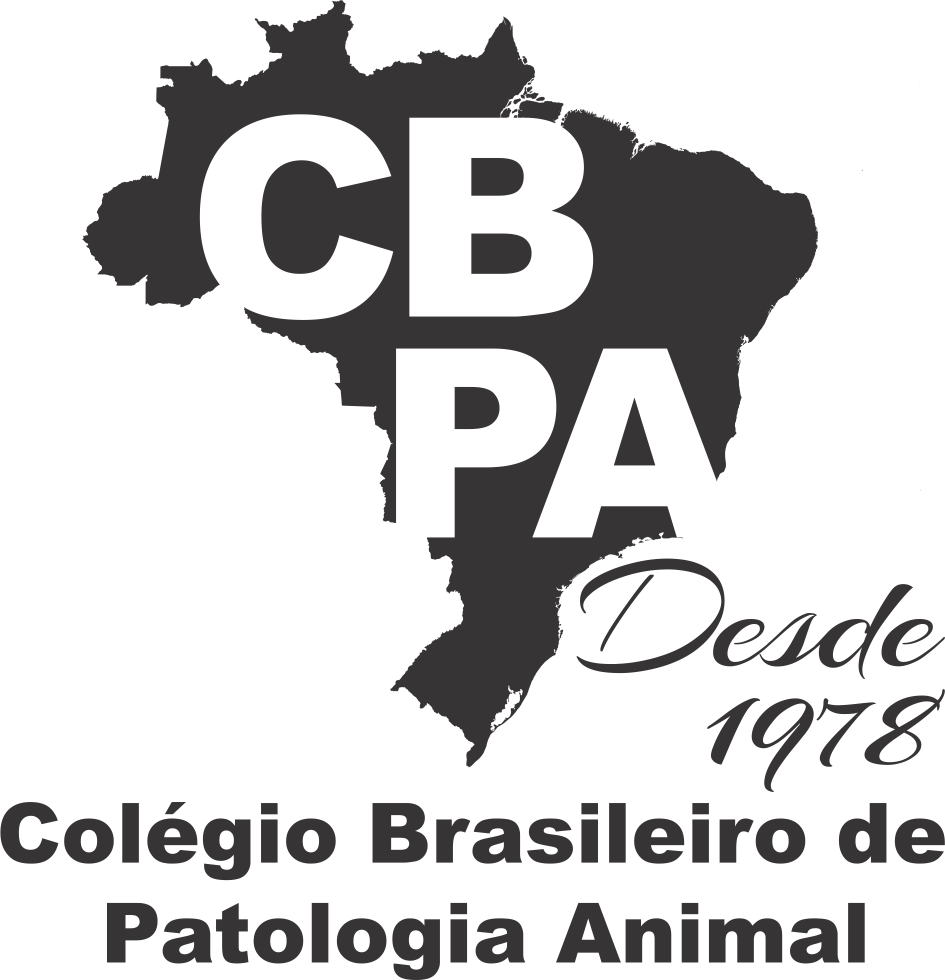Resultado da pesquisa (2)
Termo utilizado na pesquisa vagal indigestion
#1 - Vagal indigestion in mini-cattle
Abstract in English:
Vagal indigestion (VI) is a digestive disorder characterized by the dysfunction of the vagus nerve. This disorder leads to changes in forestomach motility. The causes of VI are varied. Failure to transport digestive contents may occur due to mechanical obstruction or a neurogenic origin. There are few reports in the literature regarding this disease in mini-cattle. These cattle seem to be predisposed to the development of VI. The aim of the present study was to analyze the epidemiological, clinical, laboratory, and electrocardiographic aspects of mini-cattle diagnosed with VI. The medical records of nine mini-cattle diagnosed with VI were retrospectively reviewed. Mini-cattle were referred to the Large Animal Hospital in Botucatu, Brazil, from 2002 to 2021. It was observed that VI affected young mini-cattle. The predominant clinical manifestations were intermittent gas ruminoreticular tympanism with increased volume in the left paralumbar fossa and increased volume in the right ventral region (apple/pear aspect), hypomotility in ruminal auscultation and the presence of pasty stools. The mean heart rate of the animals was 75 beats per minute. In one case, bradycardia was observed by electrocardiogram and Holter monitor system. In this case, the predominance of parasympathetic activity of the autonomic nervous system was observed. The main hematological findings were leukocytosis and lymphocytosis. The therapeutic approach included ruminal fistulation and the implantation of a permanent rumen cannula. All animals undergoing the procedure were discharged with daily care instructions.
Abstract in Portuguese:
A indigestão vagal (IV) é um distúrbio digestivo caracterizado pela disfunção do nervo vago. Esse distúrbio leva a alterações na motilidade dos pré-estômagos. As causas da IV são variadas. A falha no transporte do conteúdo digestivo pode ocorrer por obstrução mecânica ou pode ser de origem neurogênica. Há poucos relatos na literatura a respeito dessa enfermidade em mini-bovinos. Esses bovinos parecem estar predispostos ao desenvolvimento de IV. O objetivo do presente estudo foi analisar os aspectos epidemiológicos, clínicos, laboratoriais e eletrocardiográficos de mini-bovinos diagnosticados com IV. Os prontuários de nove mini-bovinos diagnosticados com IV foram revisados retrospectivamente. Os mini-bovinos foram encaminhados ao Hospital de Grandes Animais de Botucatu, Brasil, de 2002 a 2021. Observou-se que a IV acometeu mini-bovinos jovens. As manifestações clínicas predominantes foram timpanismo ruminoreticular gasoso intermitente com aumento de volume na fossa paralombar esquerda e aumento de volume na região ventral direita (aspecto maçã/pêra), hipomotilidade na ausculta ruminal e presença de fezes pastosas. A frequência cardíaca média dos animais foi de 75 batimentos por minuto. Em um caso, foi observada bradicardia por meio do eletrocardiograma e do sistema Holter. Neste caso observou-se a predominância da atividade parassimpática do sistema nervoso autônomo. Os principais achados hematológicos foram leucocitose e linfocitose. A abordagem terapêutica incluiu fistulação ruminal e implante de cânula ruminal permanente. Todos os animais submetidos ao procedimento receberam alta hospitalar com orientações de cuidados diários.
#2 - Compactação primária do abomaso em 14 bovinos no Estado de Pernambuco, p.387-394
Abstract in English:
ABSTRACT.- Câmara A.C.L., Afonso J.A.B., Costa N.A., Mendonça C.L. & Souza M.I. 2009. [Primary abomasal impaction in 14 cattle from Pernambuco State, northeastern Brazil.] Compactação primária do abomaso em 14 bovinos no Estado de Pernambuco. Pesquisa Veterinária Brasileira 29(5):387-394. Clínica de Bovinos, Campus Garanhuns, Universidade Federal Rural de Pernambuco, Av. Bom Pastor s/n, Cx. Postal 152, Mundaú, Garanhuns, PE 55292-901, Brazil. E-mail: aclcamara@yahoo.com.br
Despite the frequent use of dry and fibrous roughage for feeding cows in many regions, especially during the dry season, impaction of the abomasum has been poorly reported in Brazil, probably because the condition is misdiagnosed by practitioners. The present paper aimed to accomplish a retrospective study on primary abomasal impaction in 14 cattle from Pernambuco State, northeastern Brazil. Eight moderate cases, without severe abdominal distention and with no rumen compaction, were treated conservatively, and four severe cases, with severe abdominal distention and rumen compaction, were treated surgically. One bull was slaughtered and one cow died without treatment. The greater number of abomasal impaction cases was in Holstein cows with six cases (42.9%), followed by crossbred cattle with five cases (35.8%), and the breeds Brown-Swiss, Nelore and Marchigiana, each with one case (21.3%). The food composition was characterized by low quality fibers and varied greatly among cases. Most frequent clinical signs were apathy, dehydration, hypomotility and ruminal bloat, intestinal hypomotility and scanty or absent feces with mucus. The hematological findings revealed leukocytosis with neutrophilia and hyperfibrinogenemia in most cases. Ruminal fluid analysis showed compromised flora and fauna dynamics and increased chlorine ion concentration. Clinical (4/8) and chirurgical (2/4) recovery rate achieved 50%. The clinical and chirurgical methods remain as viable options for the treatment of light and severe impaction, but the prognosis is always reserved especially when associated to late pregnancy.
Abstract in Portuguese:
ABSTRACT.- Câmara A.C.L., Afonso J.A.B., Costa N.A., Mendonça C.L. & Souza M.I. 2009. [Primary abomasal impaction in 14 cattle from Pernambuco State, northeastern Brazil.] Compactação primária do abomaso em 14 bovinos no Estado de Pernambuco. Pesquisa Veterinária Brasileira 29(5):387-394. Clínica de Bovinos, Campus Garanhuns, Universidade Federal Rural de Pernambuco, Av. Bom Pastor s/n, Cx. Postal 152, Mundaú, Garanhuns, PE 55292-901, Brazil. E-mail: aclcamara@yahoo.com.br
Despite the frequent use of dry and fibrous roughage for feeding cows in many regions, especially during the dry season, impaction of the abomasum has been poorly reported in Brazil, probably because the condition is misdiagnosed by practitioners. The present paper aimed to accomplish a retrospective study on primary abomasal impaction in 14 cattle from Pernambuco State, northeastern Brazil. Eight moderate cases, without severe abdominal distention and with no rumen compaction, were treated conservatively, and four severe cases, with severe abdominal distention and rumen compaction, were treated surgically. One bull was slaughtered and one cow died without treatment. The greater number of abomasal impaction cases was in Holstein cows with six cases (42.9%), followed by crossbred cattle with five cases (35.8%), and the breeds Brown-Swiss, Nelore and Marchigiana, each with one case (21.3%). The food composition was characterized by low quality fibers and varied greatly among cases. Most frequent clinical signs were apathy, dehydration, hypomotility and ruminal bloat, intestinal hypomotility and scanty or absent feces with mucus. The hematological findings revealed leukocytosis with neutrophilia and hyperfibrinogenemia in most cases. Ruminal fluid analysis showed compromised flora and fauna dynamics and increased chlorine ion concentration. Clinical (4/8) and chirurgical (2/4) recovery rate achieved 50%. The clinical and chirurgical methods remain as viable options for the treatment of light and severe impaction, but the prognosis is always reserved especially when associated to late pregnancy.











